This blog explores various types of earthings used in solar plants, their significance, and how they contribute to the overall performance and safety of systems. In this last of the article you will get the bonus tip for earthing system.
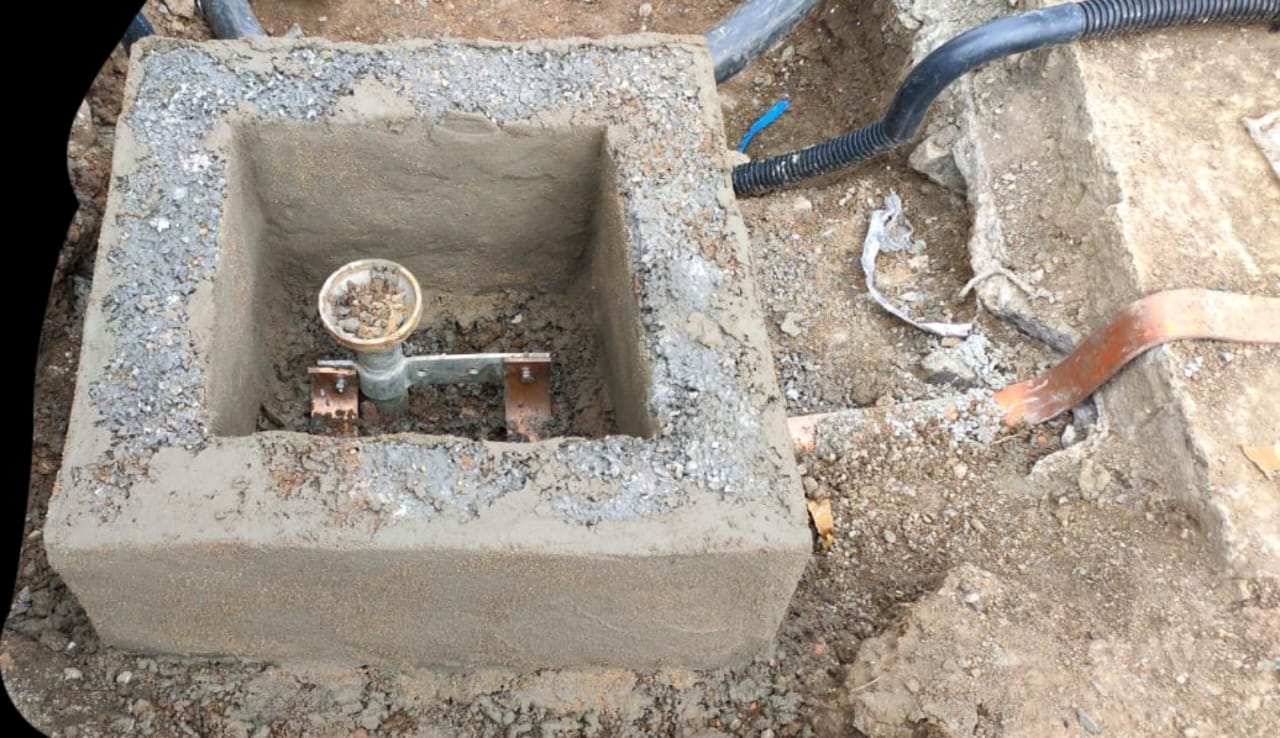
Different concept of Earthing in solar plant
What is Earthing?
Earthing, as the name suggests, means connecting something to the earth. In electrical terms, earthing is a safety measure that protects both electrical equipment and people in case of faults like short circuits or insulation failure.
By creating a low-resistance path to the ground, earthing safely directs excess current away from the equipment and prevents damage. It also protects people from electric shocks by ensuring the current flows into the ground instead of through the human body.
The number of earth pits needed depends on factors like the soil resistivity in the area, fault currents, system voltage, and environmental conditions. By following proper design practices, system studies, and standards like IS3043, we can ensure the safety and reliability of systems, such as solar power plants.
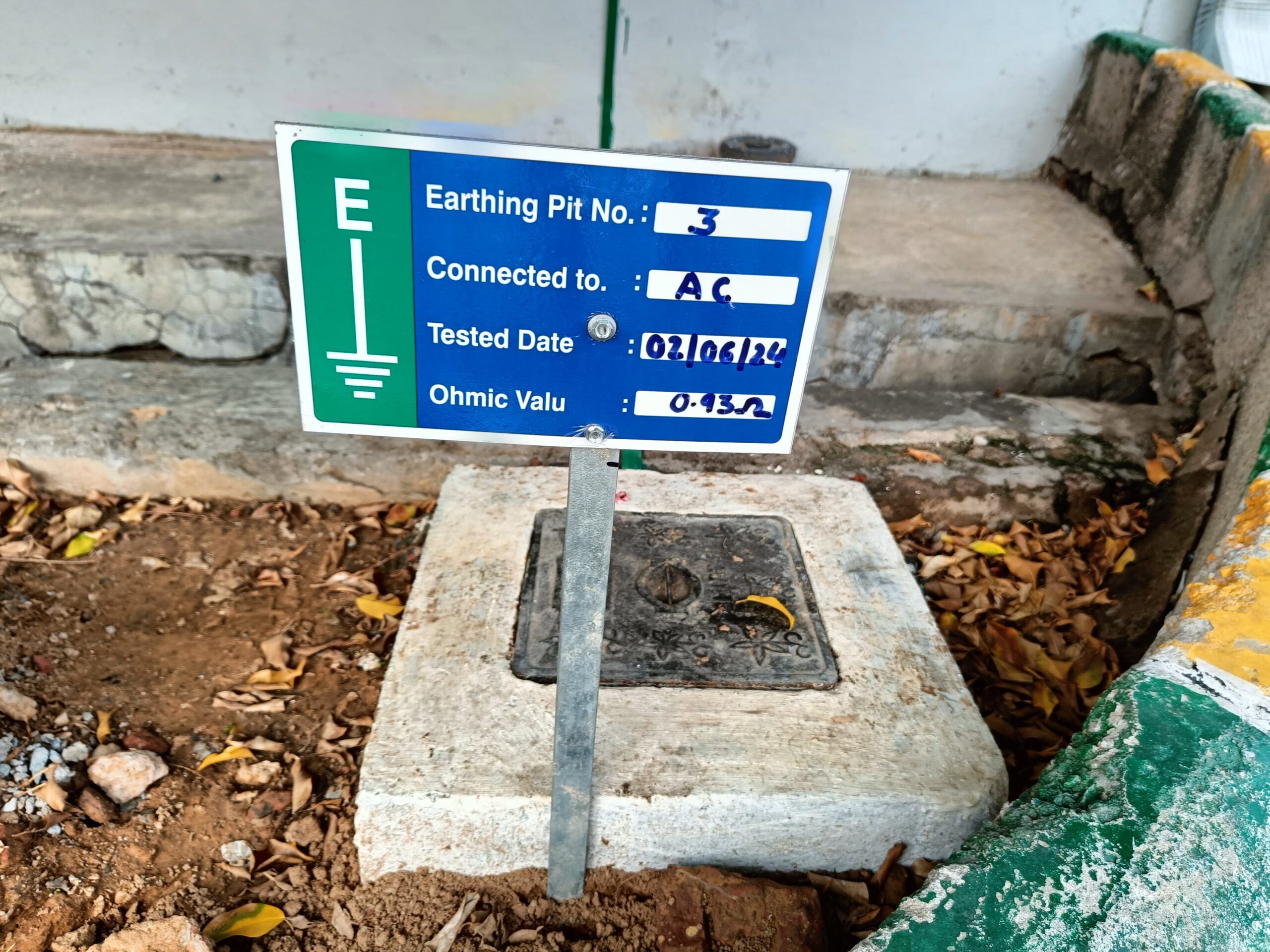
In this article we shall know about the different aspects of earthing of solar plant and its importance. You can read about the previous article about Daisy Chain Vs Leapfrog Technique in Solar Stringing
Earthing in solar plants
Earthing in Solar Plants
Earthing in solar plants involves safely connecting the system components to the ground to ensure safety, protect equipment, and maintain efficiency. Proper earthing is essential for preventing electric shocks, minimizing damage during faults, and ensuring the system’s reliable operation. Let’s focus on the earthing of specific components, starting with the Module Mounting Structure (MMS).
MMS Earthing
MMS refers to the structure used to mount solar panels. After installing the MMS, it is crucial to provide proper earthing. If a fault current flows from the solar panels, the MMS could become electrically charged, posing a serious risk of electric shocks to people nearby.
How MMS Earthing is Done
Material Used: Typically, Galvanized Iron (GI) strips of sizes like 25×3 mm or 50×6 mm are used. The GI strip is welded to the MMS column posts to ensure a solid electrical connection.
Interconnection of Tables: All MMS tables are connected to form a common earthing circuit. This ensures that any fault current is directed safely to the ground without leaving parts of the structure unprotected.
Double-Side Earthing: It is important to provide double-side earthing (connecting two paths to the ground) to enhance safety and reliability. Some contractors skip this step to save on material costs and time, but this can lead to increased risks to equipment, investments, and human safety.
Below is a diagram showing how MMS earthing is implemented in solar plants.
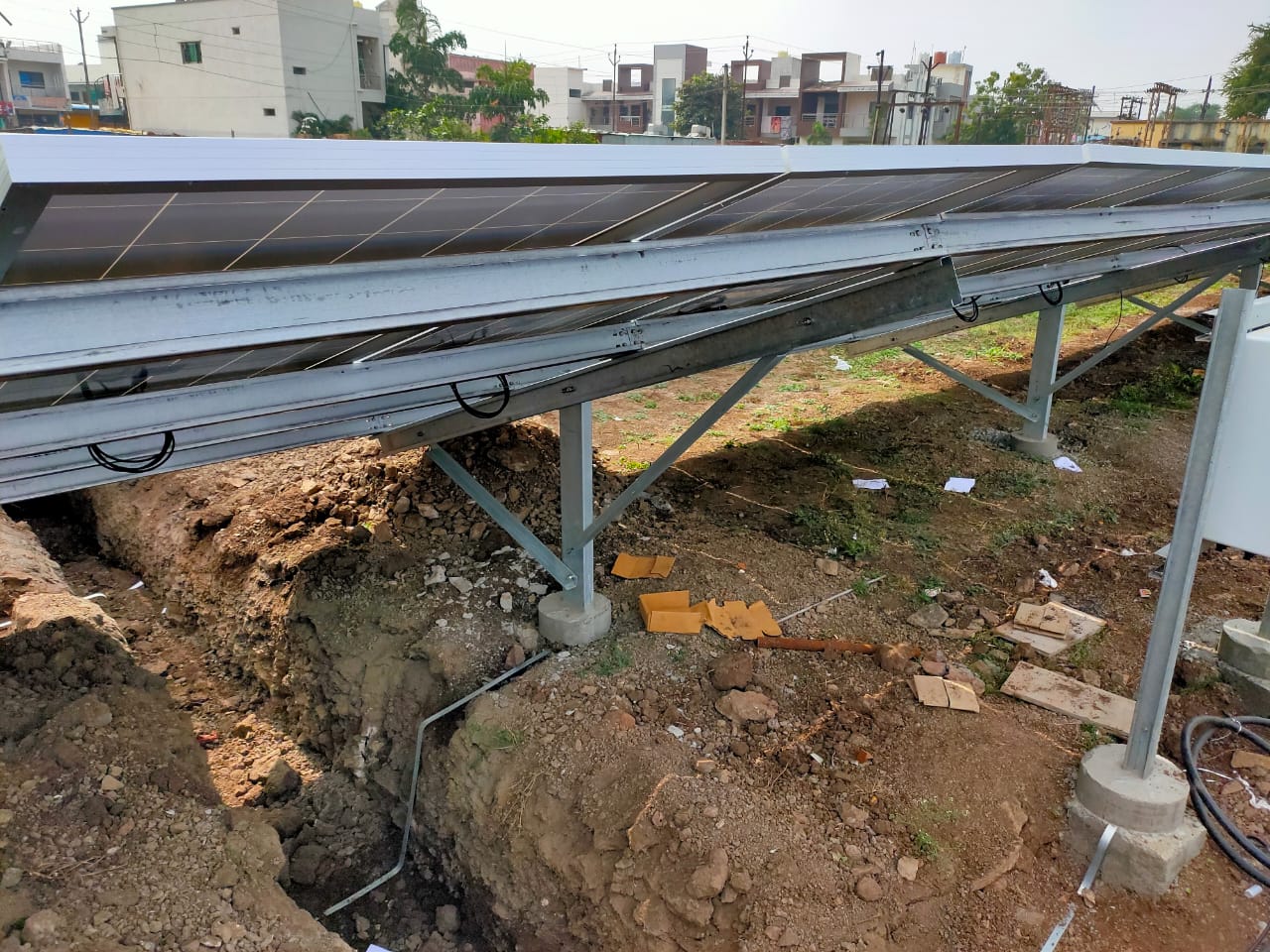
Module-to-Module Earthing
Solar modules are a critical component of a solar power plant, and their electrical safety is crucial for both performance and longevity. Proper earthing of modules ensures safety, protects the modules from electrical faults, and minimizes PID (Potential Induced Degradation)—a phenomenon that can affect performance over time. (We will discuss PID in detail in a separate post.)
Module-to-module earthing involves electrically interconnecting all solar modules in a string or array to create a common ground potential. This ensures that any fault current from a module is directed safely to the ground without leaving any module unprotected.
Why is it Important?
Enhanced Electrical Safety: Without module-to-module earthing, individual modules can remain at a different potential, which increases the risk of electric shocks and damage during fault conditions.
Minimized Risk of Fires: Faults, such as insulation damage or short circuits, can result in arcs and overheating. Without proper earthing, these faults can lead to fires in the solar plant.
Avoiding Over-Reliance on MMS Earthing: Some designers skip module-to-module earthing, assuming that connecting the module frames to the MMS (Module Mounting Structure) is sufficient. However, relying solely on MMS earthing is a dangerous practice. Fault currents may not always find a safe path to the ground, leaving the system and modules vulnerable
Inverter Earthing
Inverter earthing is an important part of ensuring safety and proper performance in a solar power plant. The inverter, which converts DC power from the solar panels into AC power, needs to be protected from electrical faults, surges, and potential hazards. There are two main types of earthing for inverters:
Body Earthing: The metallic body of the inverter is connected to an earthing electrode. This prevents the body from becoming electrically charged in case of a fault, protecting people from electric shocks.
Potential Earthing: This involves stabilizing the electrical voltage (potential) of the inverter system by connecting it to the earthing system. It helps ensure safe operation, protects against overvoltage, and maintains system stability. Below is a diagram showing how Inverter earthing is implemented in solar plants.
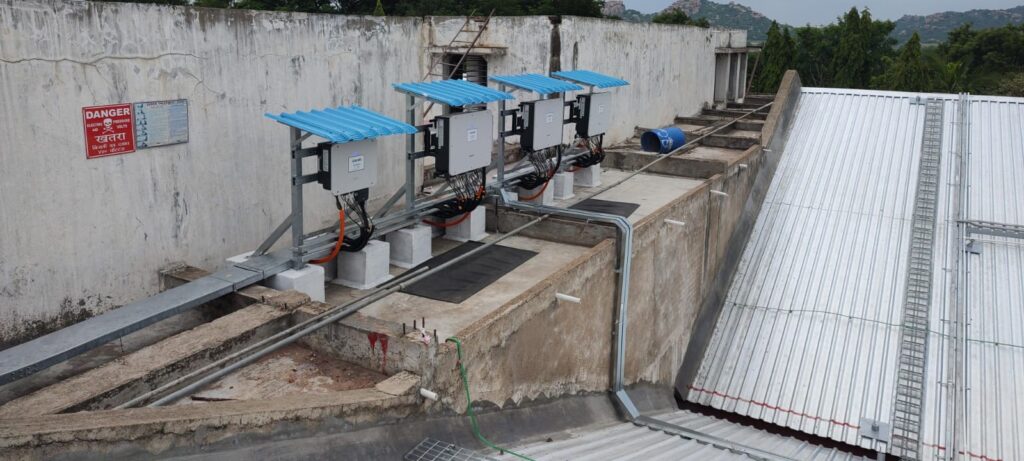
LA (Lightning Arrestor)Earthing
Lightning Arrestor (LA) earthing is a crucial safety measure in solar plants to protect the equipment and structures from lightning strikes. A lightning arrestor is designed to capture high-voltage lightning surges and safely direct them to the ground, preventing damage to the solar plant components and ensuring the safety of people working nearby.
In solar plants, ESE (Early Streamer Emission) Class-4 type Lightning Arrestors (LAs) are commonly used. These LAs offer a protection radius of 107 meters, ensuring effective coverage of the surrounding area.
For each LA, three earthing pits are required to safely dissipate the lightning surge into the ground. Additionally, installing an LA counter is essential to monitor the system. The counter records the number of lightning strikes, helping to track activity and ensuring the lightning protection system remains in optimal working condition.
Key Components of Lightning Arrestor (LA) Earthing
Lightning Arrestor (LA):
The lightning arrestor is installed at the highest point in the solar plant, such as on top of inverter rooms, module mounting structures (MMS), or other tall structures. It acts as the first point of contact for a lightning strike, safely capturing the high-voltage surge. Its purpose is to protect the solar plant components from direct lightning strikes by directing the energy toward the earthing system.
Down Conductor: The down conductor connects the lightning arrestor to the earthing system. It provides a low-resistance path for the lightning surge to flow safely from the arrestor to the ground. Commonly made of corrosion-resistant materials such as copper strips or galvanized steel (GI) to handle the high-energy discharge effectively. The down conductor should be routed carefully to minimize bends or sharp turns, as these can disturb the smooth flow of the lightning current.
LA Counter:
A Lightning Arrestor Counter is a device installed in the lightning protection system to record the number of lightning strikes that pass through the Lightning Arrestor (LA). It helps monitor and maintain the performance of the lightning protection system in solar plants. Below you can see the photos of LA earthings several parts. Below is a diagram showing how LA earthing is implemented in solar plants.
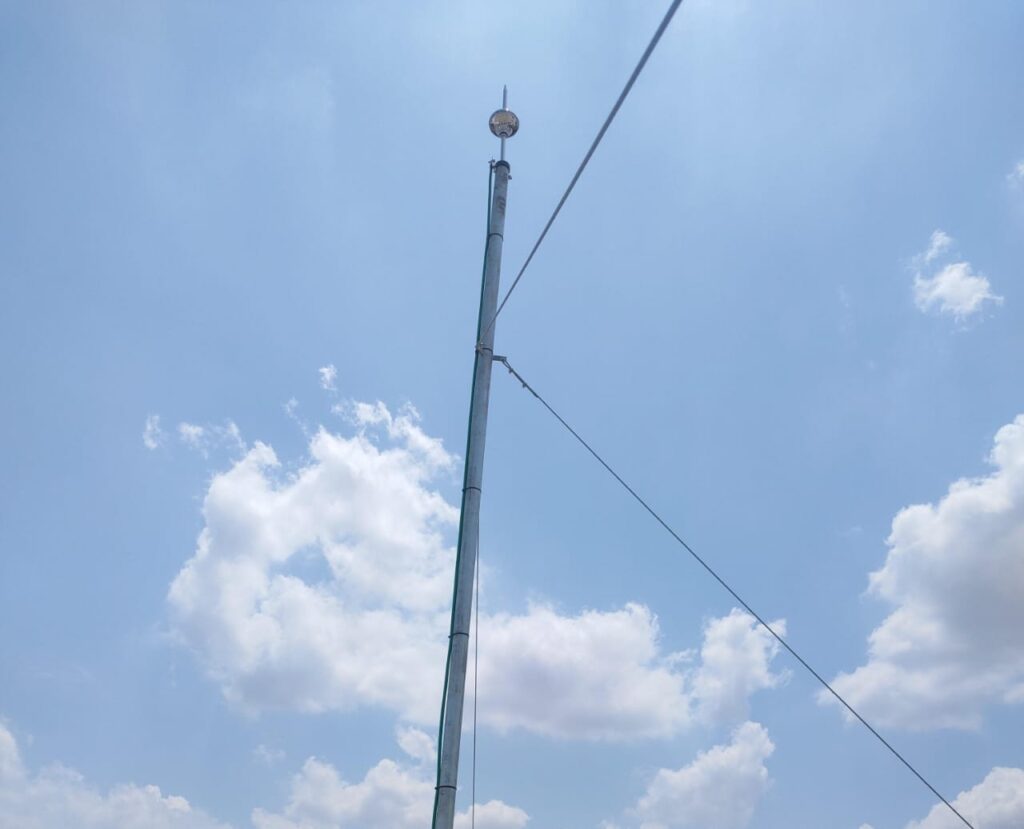

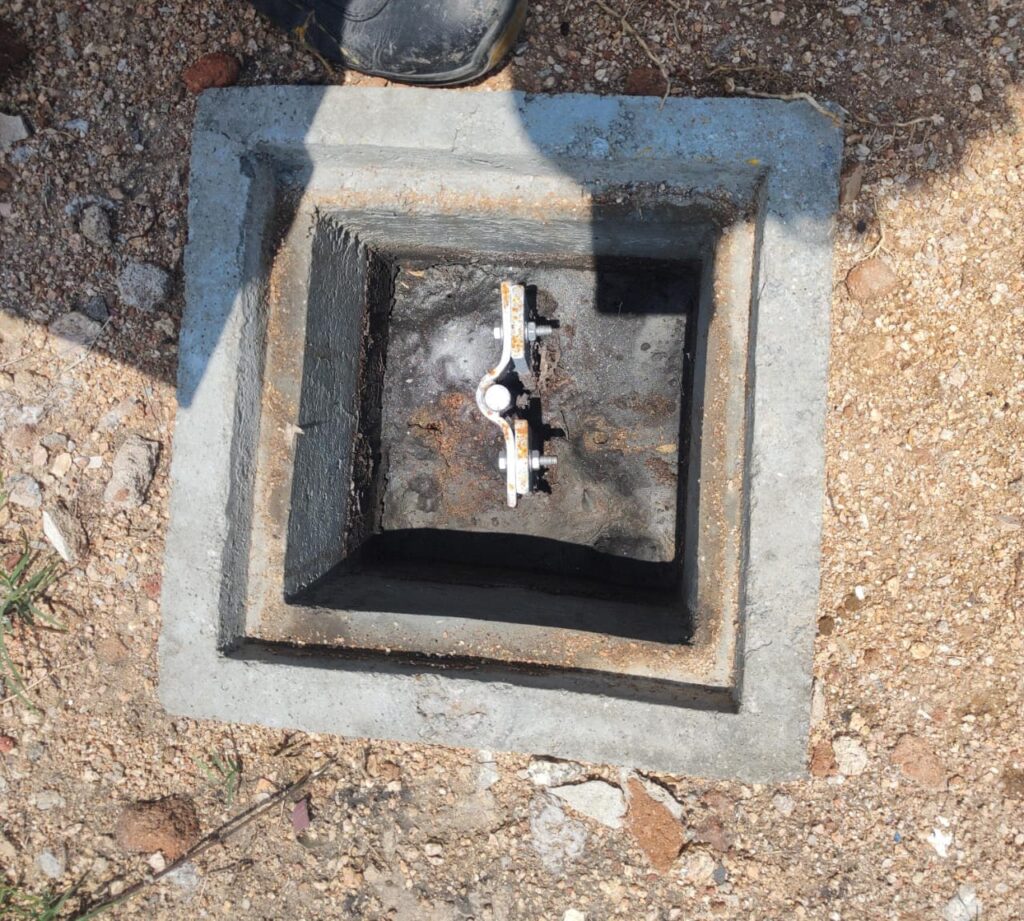
Transformer Earthing
Transformer earthing is very very important aspects for electrical safety and functionality. It protects human being from electrical Hazards and safeguard the equipment from damage and provide reliable operation of transformer. There is mainly two types of transformer earthing we shall discuss
Body Earthing – Body earthing involves connecting the transformer’s non-current carrying metal parts (like the oil tank and radiators) to the ground.
Neutral Earthing – It is the way of connecting transformer neutral to the earth and provides a path for faults current. It prevent from damages to the equipment’s and also prevents from shock hazard to the people. The neutral point is created by connecting a set of windings in a star configuration. Below is a diagram showing how LA earthing is implemented in solar plants.
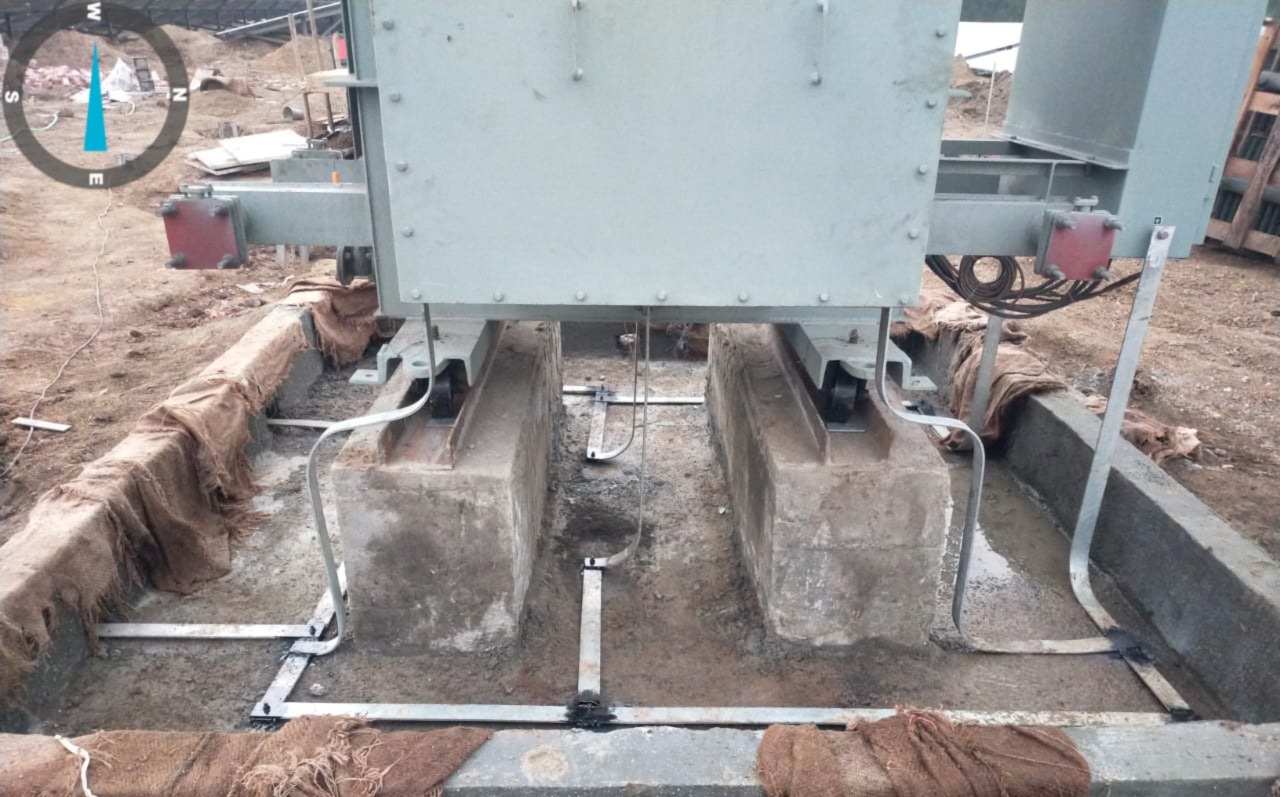
Bonus tip – Below is the video of how to do earthing and you will see how earthing is done.
Earthing in solar plants – In this video, you will learn step-by-step installation techniques. That’s all for now—see you in the next post! Thanks!
